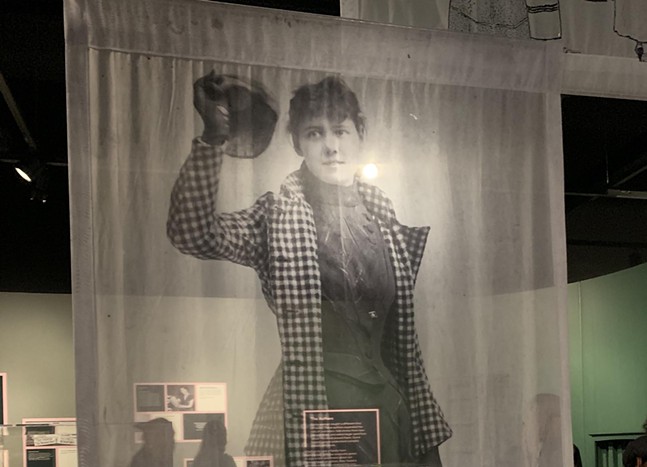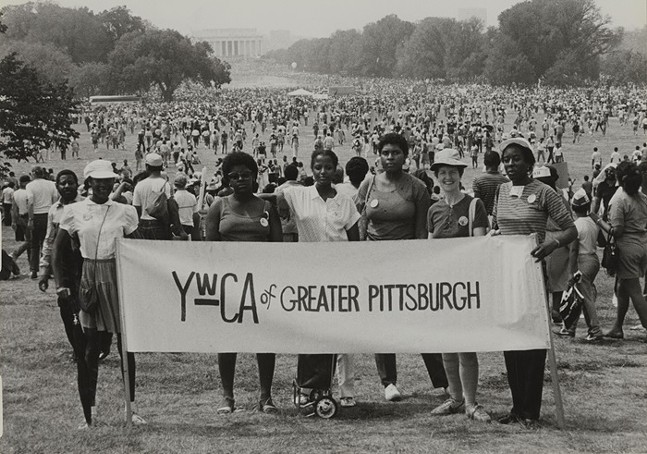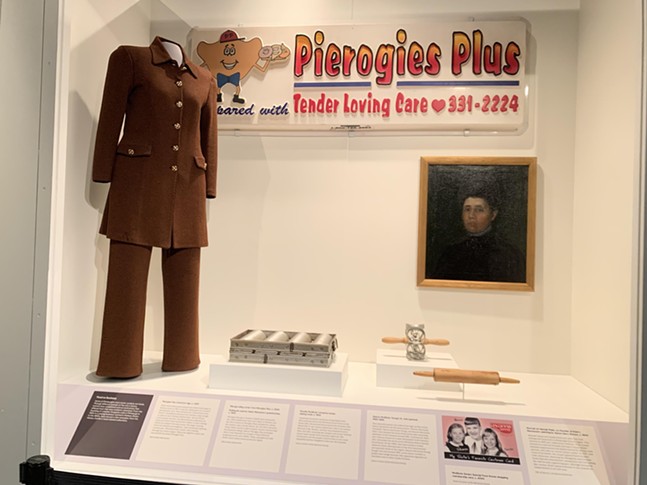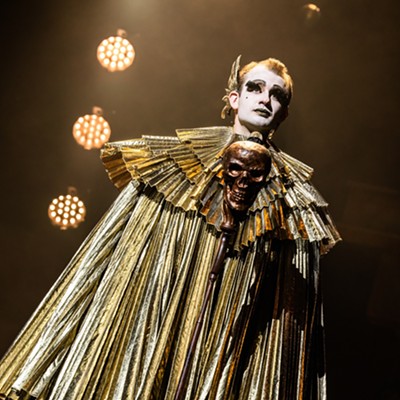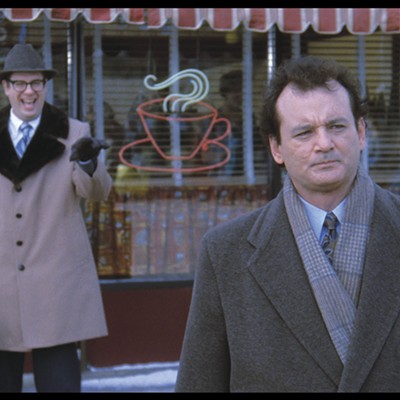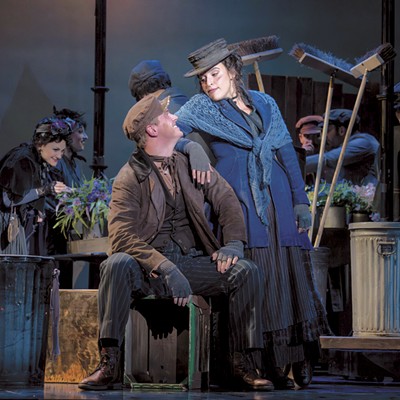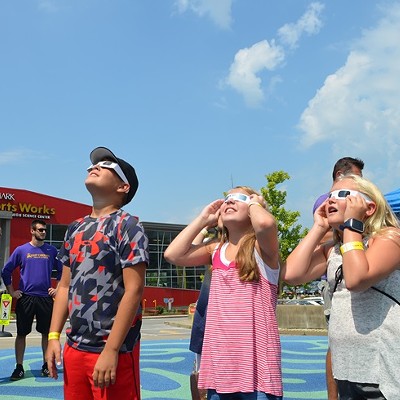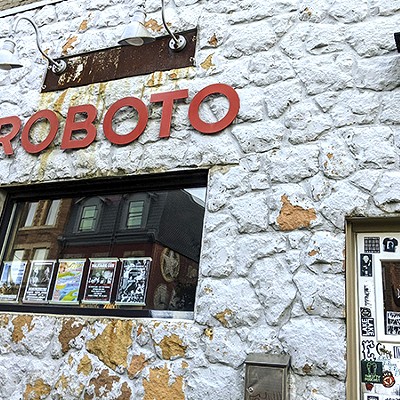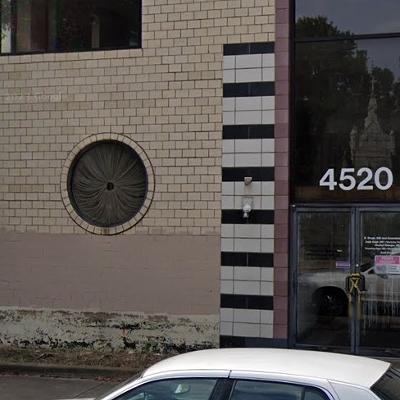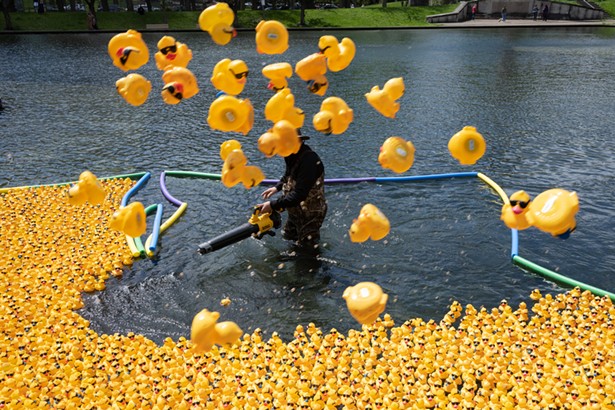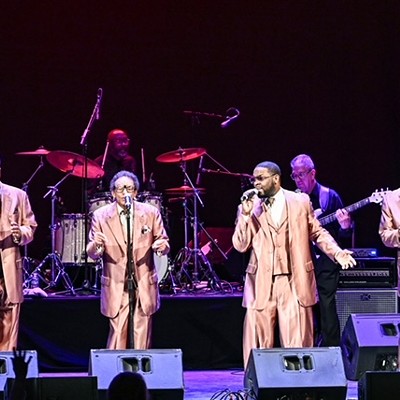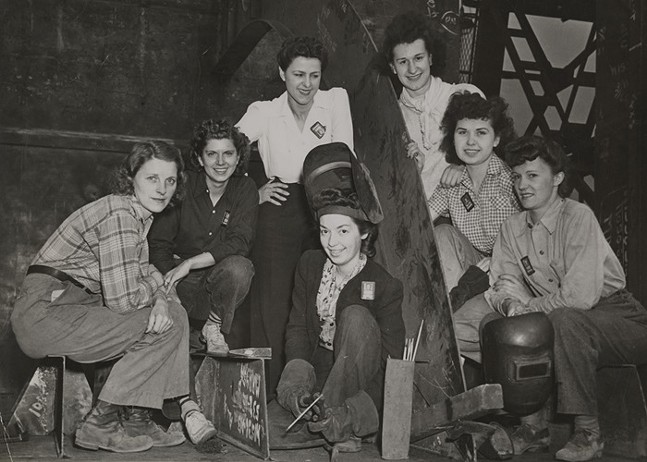
The 9,000-square-foot exhibition — described in a press release as displaying over 250 artifacts, objects, photos, and documents from “entrepreneurs and activists, artists and athletes, scientists and inventors, and change-makers and barrier breakers" — opened on March 23 in observance of Women's History Month. The show examines "women who have made an immeasurable impact" but whose stories are often "overlooked."
Many of the artifacts, including original sketches of Oscar the Grouch and Mr. Snuffleupagus penned by Penny Owens Skillen, a Carnegie Tech alumna who helped create Sesame Street, are being publicly displayed for the first time.
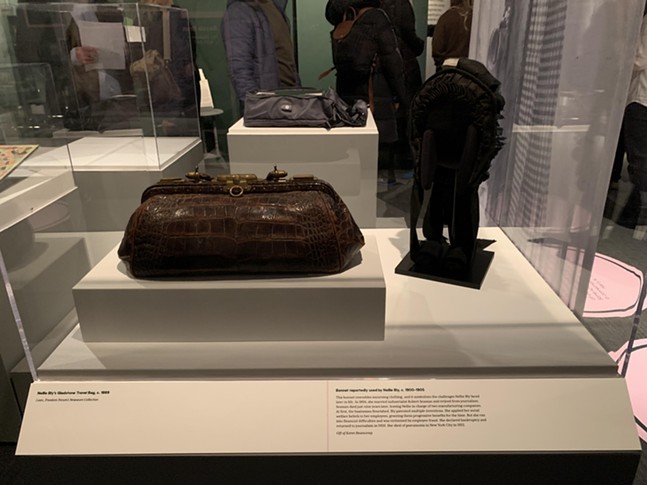
But as senior curator Leslie Przybylek explains, western Pennsylvania was home to many “real life Rosies” who worked in steel mills and other defense jobs to aid the war effort as men served abroad, even as they “were largely going to give up those jobs when the war was done.” Today, Carnegie Mellon University’s Girls of Steel Robotics team has incorporated Rosie as part of their mascot, a robot screen-printed with Rosie’s signature red and white polka dot bandana, who also appears in the exhibition.
“What does that mean?” Przybylek asks. “And how did we get to the point where a World War II era figure that had a very complicated backstory has become this symbol of empowerment?”
“We’re also looking at those stories that reflect the reality that you don't have to be a barrier breaker for your history to matter and for it to be part of the larger stories of Pittsburgh and this place,” Przybylek adds.
A Woman’s Place features an illustrated timeline that begins in 1776 — it kicks off with infamous philanthropist Mary Schenley — and encompasses nearly 250 years of history. Protest banners and objects from Lucy Kennedy Miller and Winifred Meek Morris represent women’s suffrage, and the civil rights movement comes through activists Daisy Lampkin and Brenda Strong Frazier, who also chaired Pittsburgh’s chapter of the National Organization for Women. Other areas covered include the disability rights movement, the second-wave feminist movement of the 1970s, and the campaign to pass the Equal Rights Amendment (with an ERA pin of Frazier’s displayed).
The asynchronous artifacts reveal women’s history progressing in fits and starts. For example, the exhibition’s sports section includes artifacts from Louise Fulton, “a homegrown pioneer” from East Liberty, who, according to curator Emily Ruby, was among the first Black women to compete on a professional bowling tour and the first Black person to win a professional bowling tournament. The section also jumps back to July 1870, when two 16-year-old girls held a competitive rowing match on the Monongahela River, making front-page news and drawing 10,000 spectators.
“So you would think, does this mark the beginning of women's participation in this sport? It really doesn’t,” Ruby says.
Similarly, a baseball glove worn by Betsy Jochum, a player for the All-American Girls Professional Baseball League, appears. Though the league was widely popular in the 1940s and 50s, after its closure, it was largely forgotten until the 1992 hit film A League of Their Own (also revived as a Pittsburgh-shot streaming series in 2022).
“We’ll talk about this kind of ebb and flow, this opportunity, and then this kind of disappearance,” Ruby says of the exhibition, noting it was often the case that it fell to barrier-breaking women to “organize and [fight] for the opportunity to participate.”
It’s with some feminist guilt that I found the clothing on display to be the most evocative part of the exhibition, as it spans so many spheres of women’s influence.
“There will be a wedding dress, but there will also be a military combat outfit. There will be a union T-shirt,” Przybylek told visitors.
Museum-goers can glimpse the inauguration dress donned by Sophie Masloff, Pittsburgh’s first and only female mayor to date, and the city’s first Jewish mayor. Not far off is a 1969 Oscar de la Renta aluminum-thread bikini; initially scandalous, the swimsuit was commissioned by Alcoa to expand its market.
By contrast, a display honors western Pa. women who impacted the region's food scene. Honored are the specialty food stores established by the McGinnis sisters — “a fantastic modern immigration story,” Przybylek says — and the McKees Rocks institution Pierogies Plus, complete with a brown suit and rolling pin.
The exhibition ends with a reminder that what people see is not static with an end point, but rather a living history and still actively gathering stories. Visitors are invited to leave feedback or contribute to the History Center’s collection.

